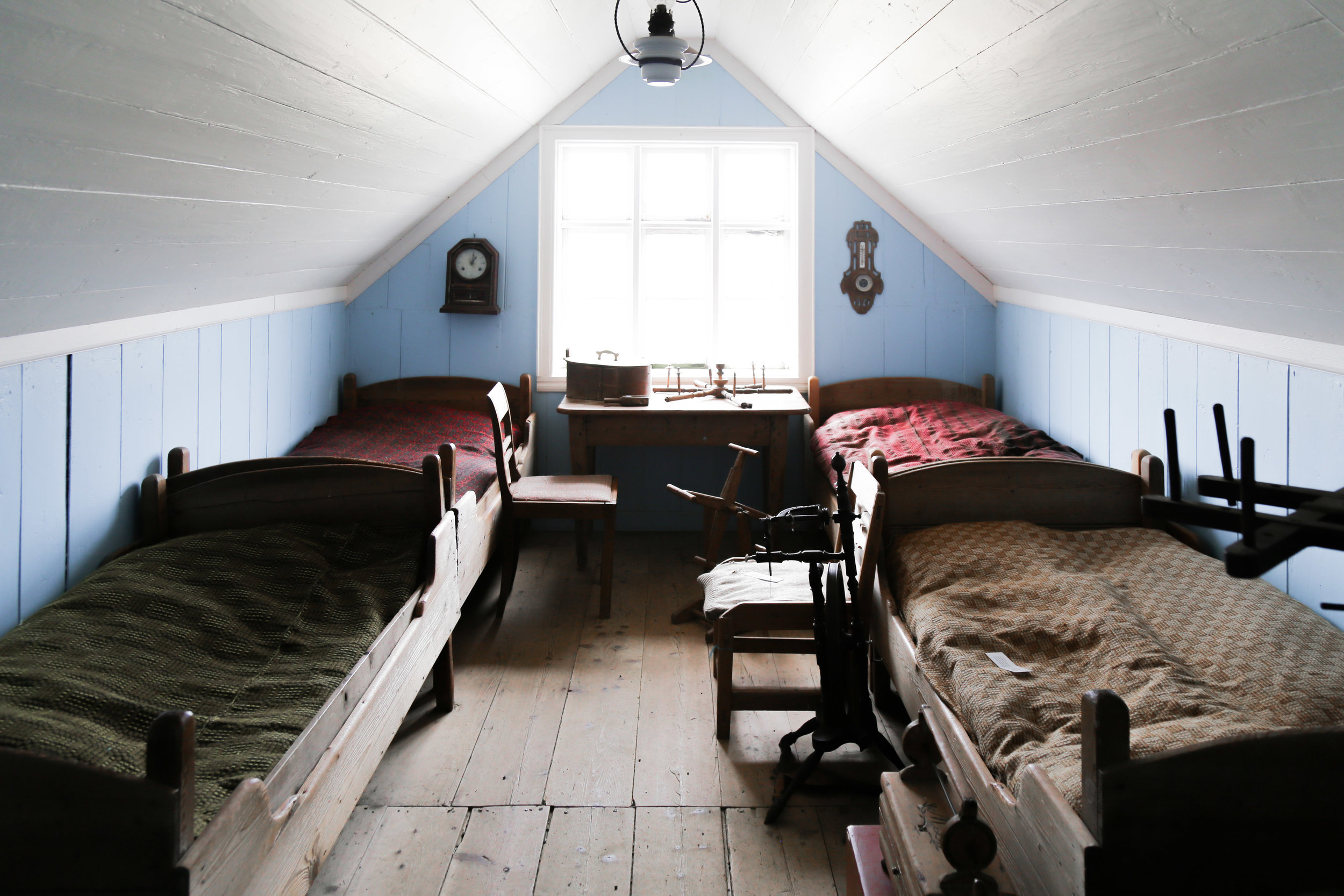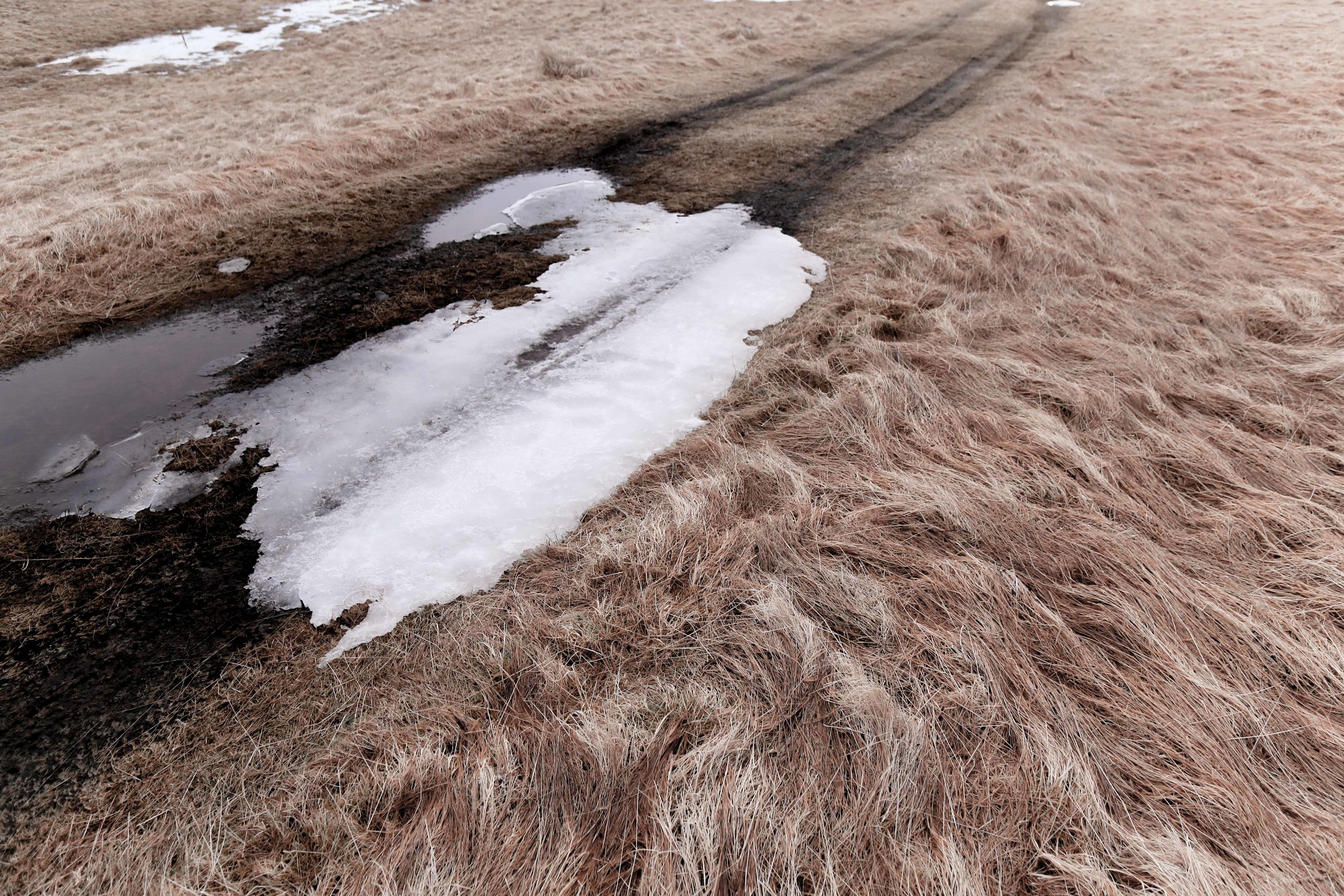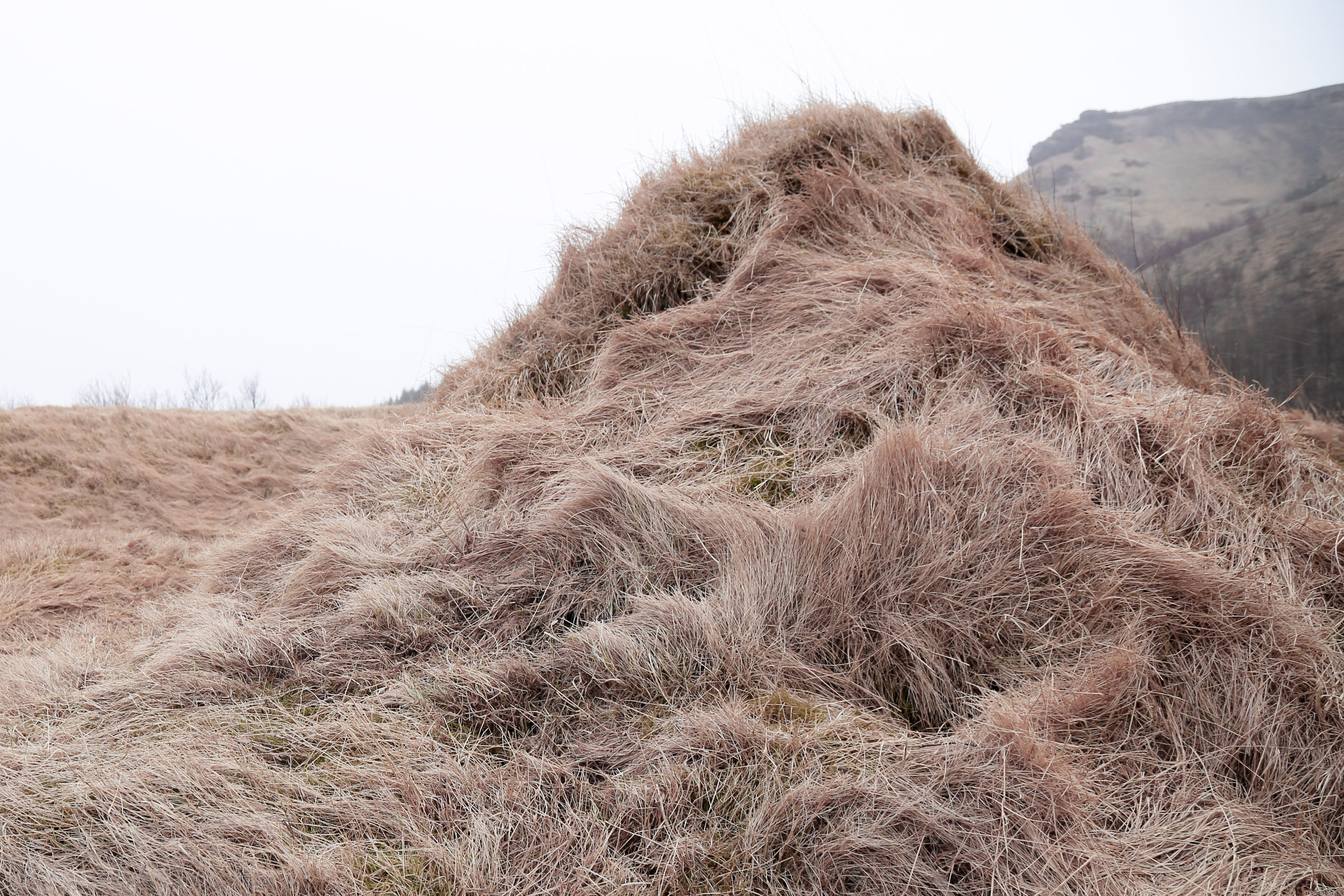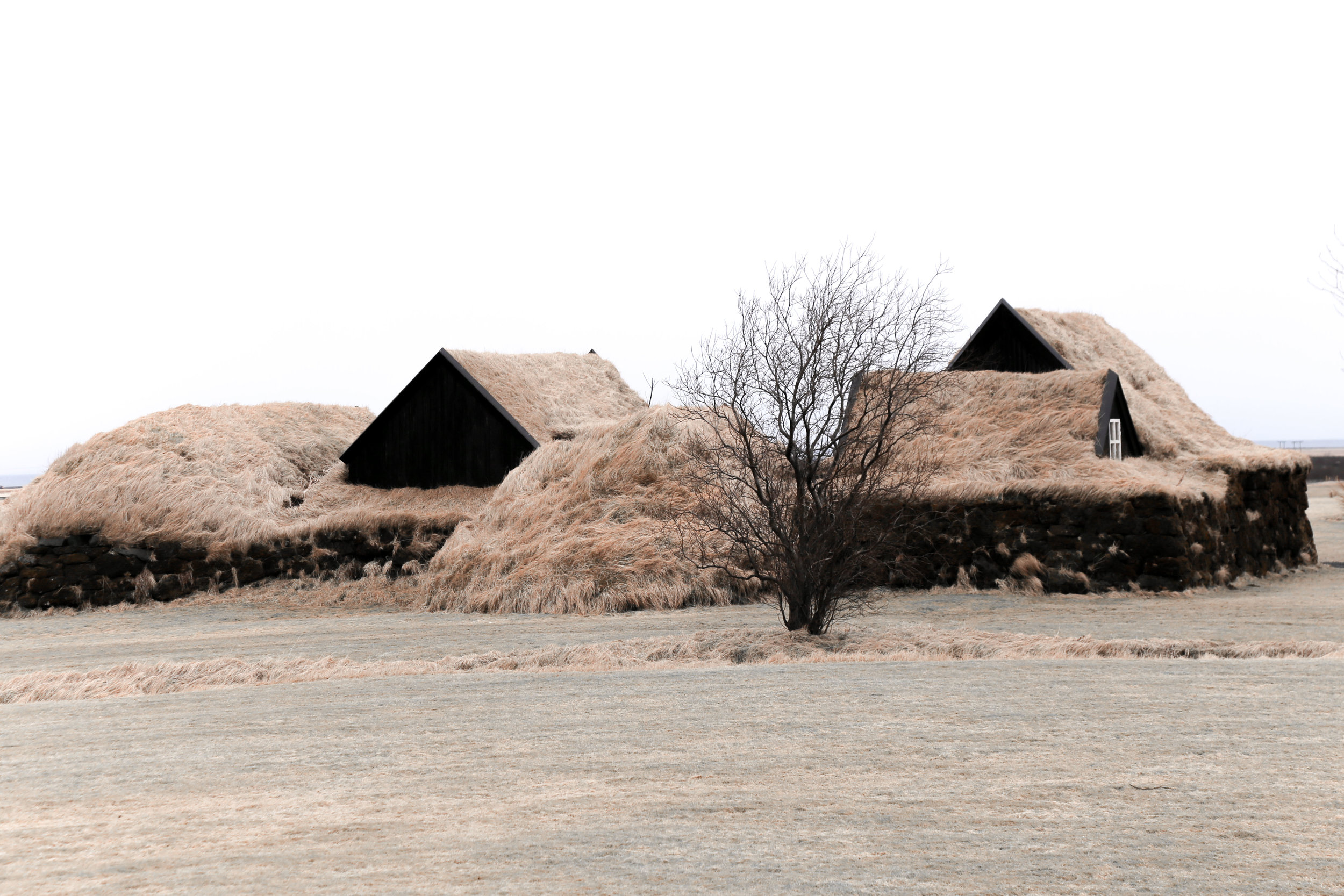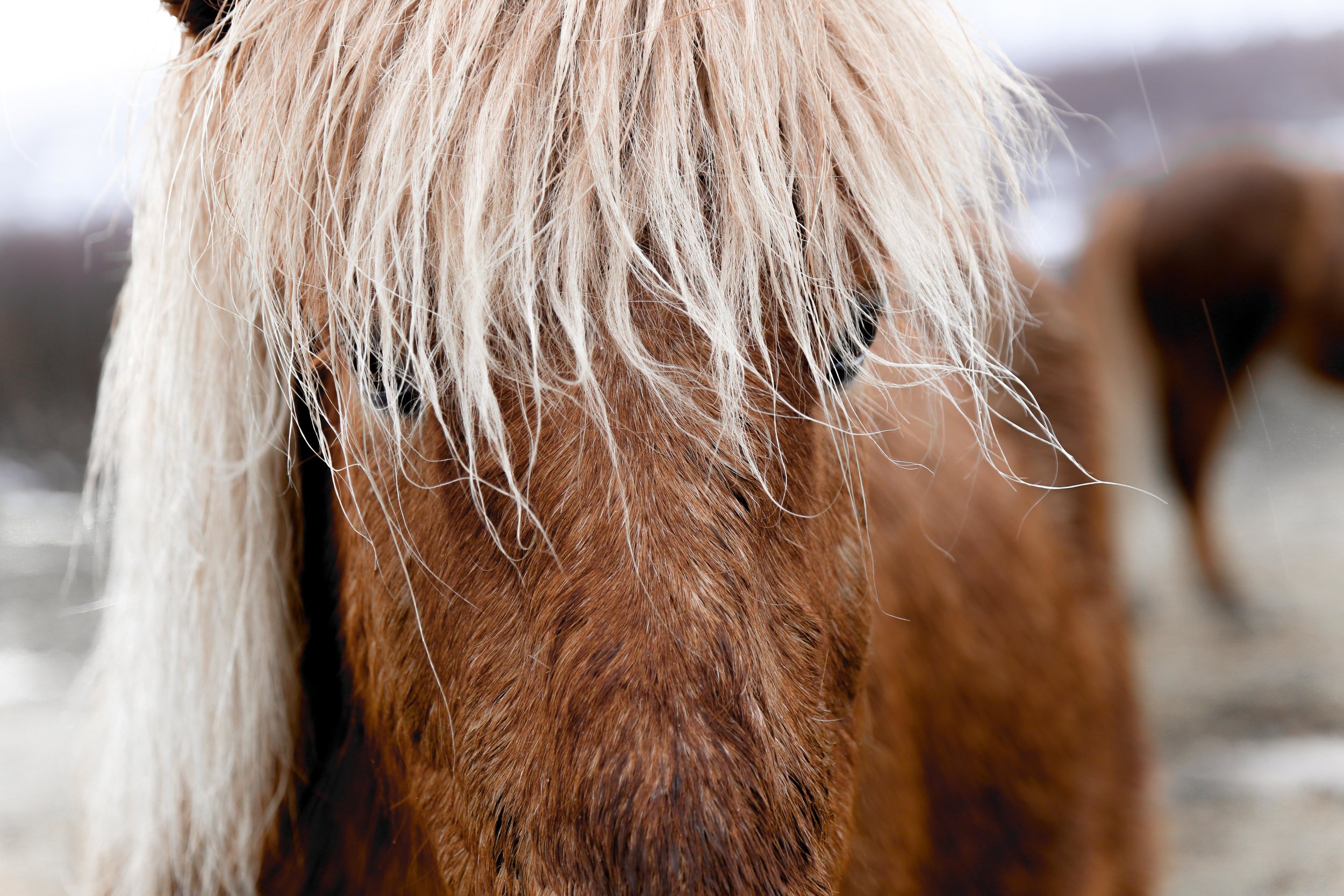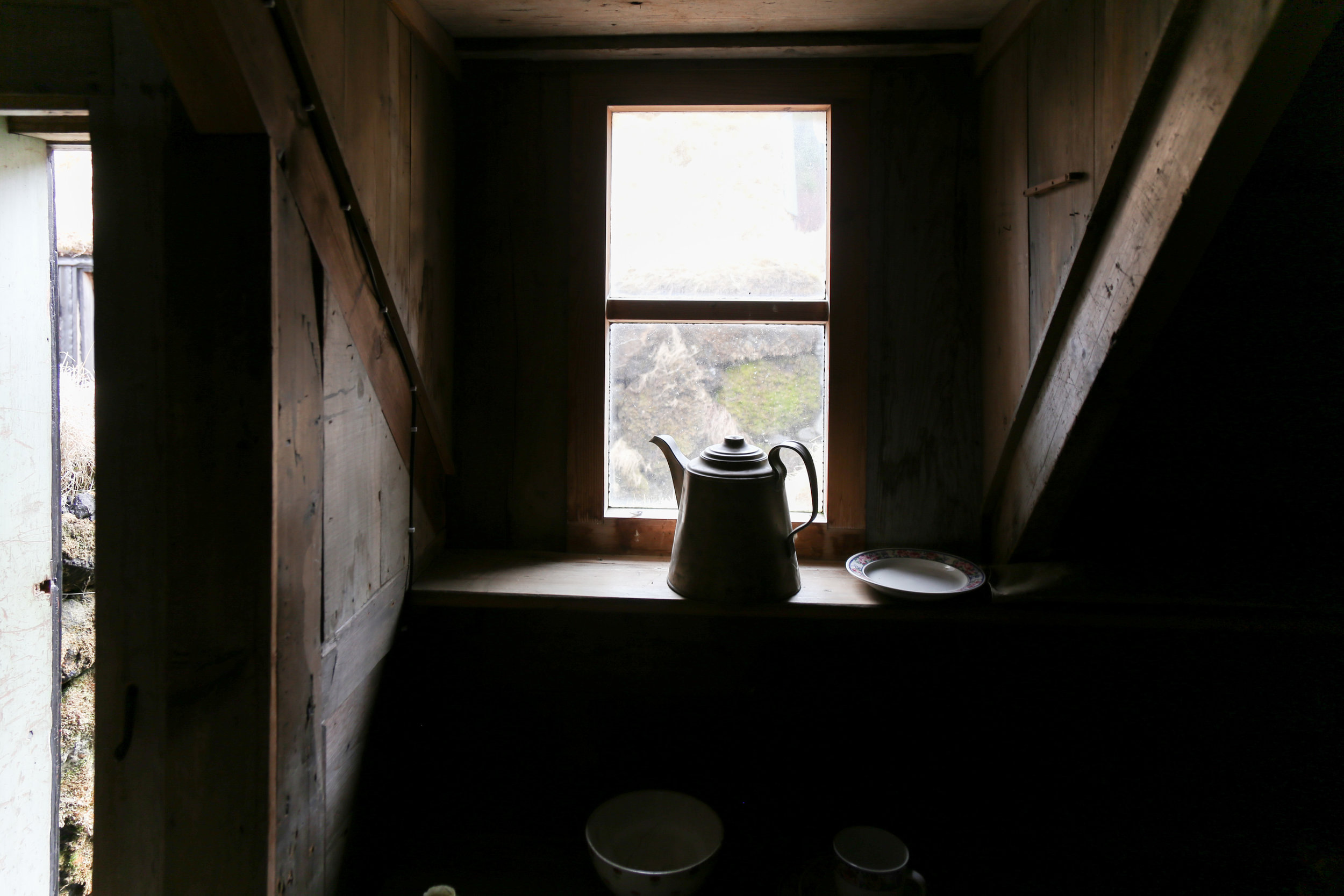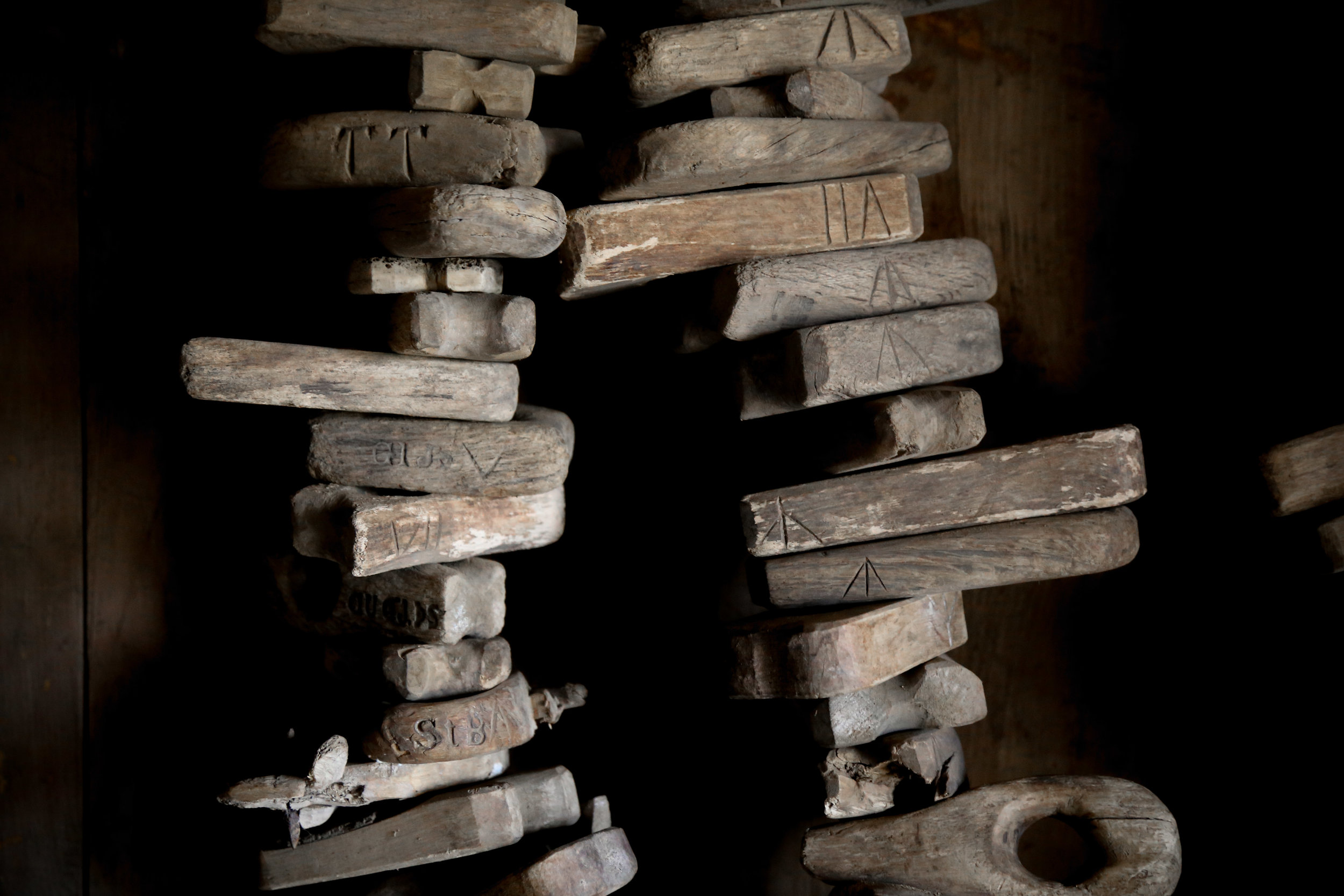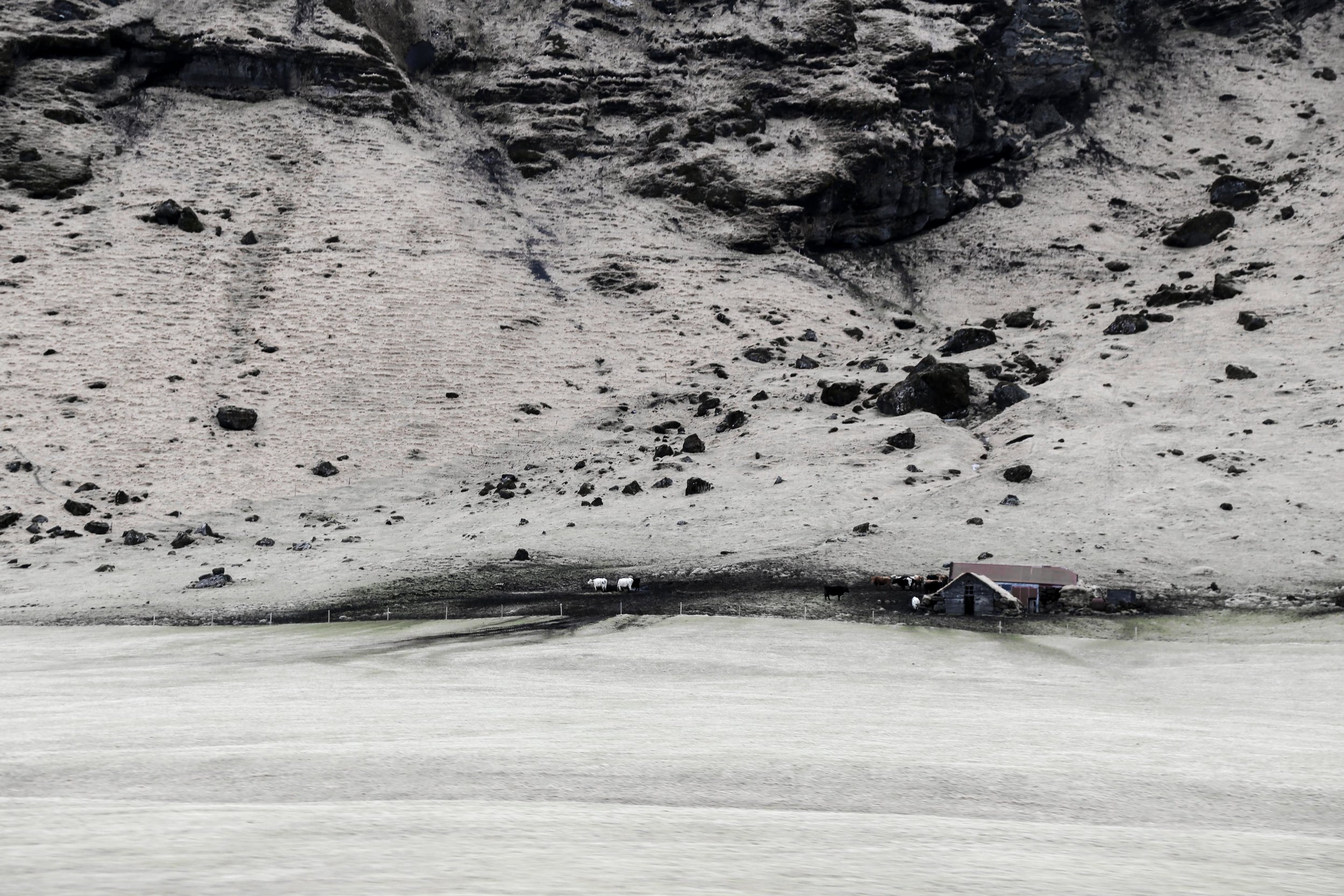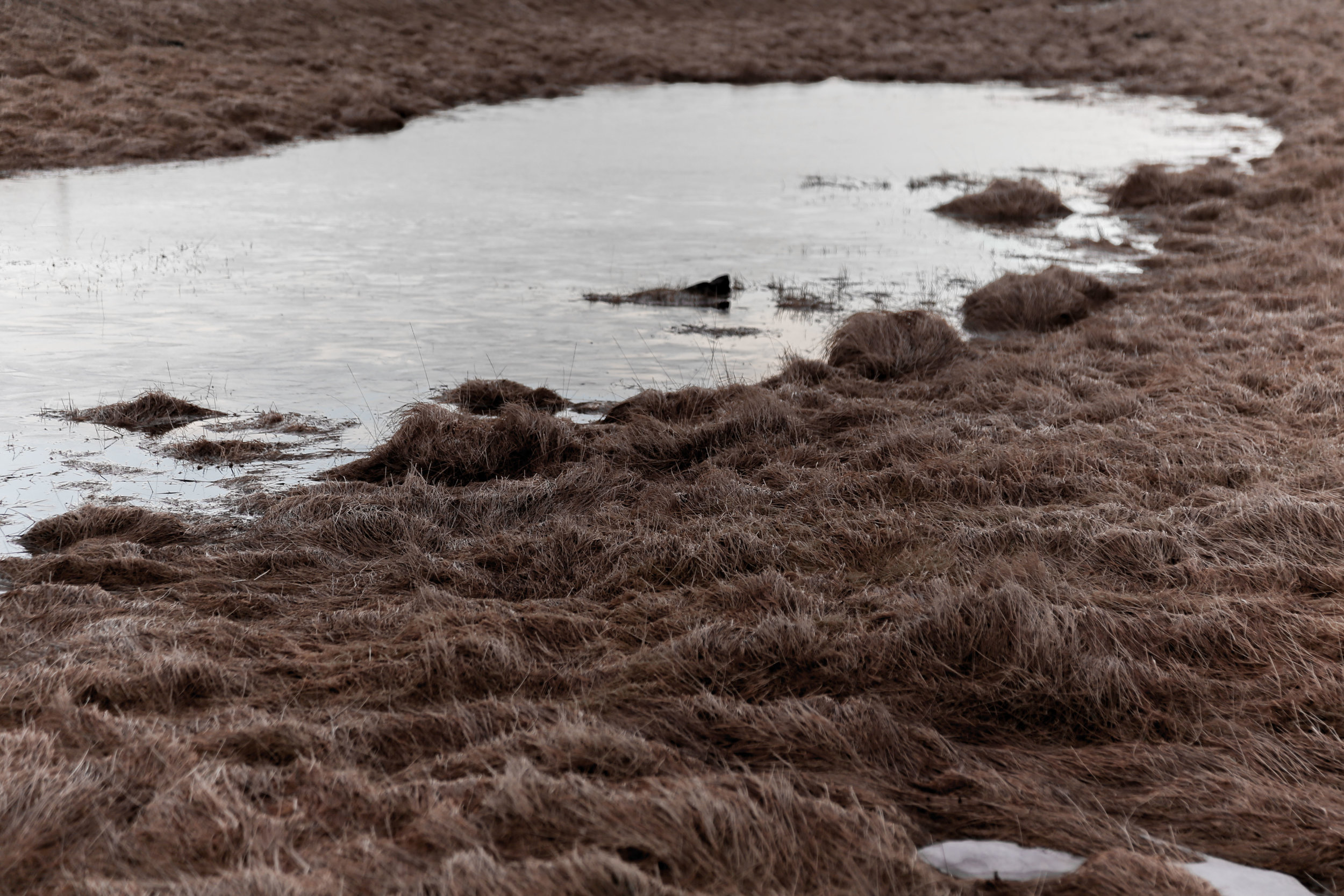WHY IT MATTERS : Outdoor Folk Museums
Under the Grass
In South Iceland, on a barely thawing March day, we visited the turf houses in the open air ‘Skogar Museum’. We tramped from building to building, glimpsing into the past, stepping in and stepping back outside. We saw not just the objects but the relationship between them - a table set up for mending fishing nets by the natural light of a tiny window. We felt the close ties between the natural materials of the land and materials of the home. The resourcefulness and ingenuity of an island people living in extreme weather conditions was everywhere. We ducked under the hairy grass roof, crossing the threshold, from outside to inside. Our hands numb with cold inside our modern gloves, the animal skins on the bed had a self evident value. We noted how windows were angled and how as a result light falls into the interior of the spaces without artificial illumination. The surprise use of the vibrant blue paint in one room was almost alarming but also recalled the vivid blue light reflected in the glaciers we had just left behind at Jökulsárlón.
Wherever we travel we always try to visit outdoor folk museums in whatever city or country we are in. It has become something of a tradition of ours now. And we have been to many, many folk museums. There is something about glimpsing the normal, everyday, home objects of a culture in the something (close to) their original habitat. The artificial lights, glass cases and dense panels of text of museums serve a purpose but so much is also lost in translation.


